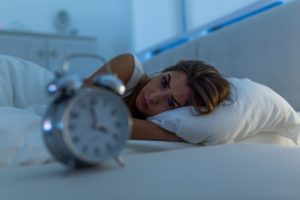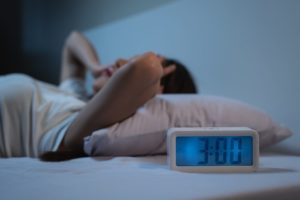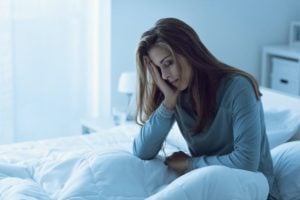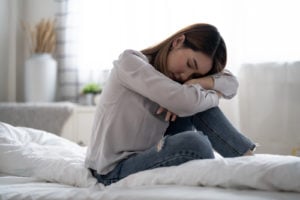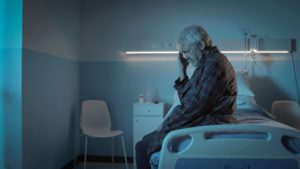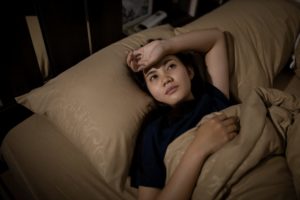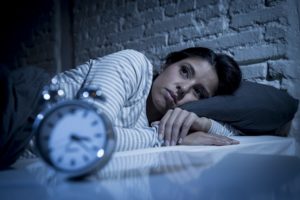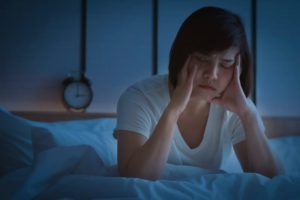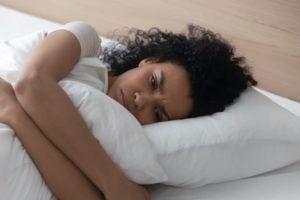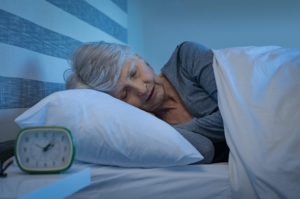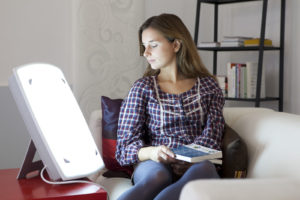Period Insomnia
How PMS and PMDD Impact Sleep
In premenstrual syndrome (PMS), a person experiences multiple symptoms for six or so days that span the lead-up to and beginning of their menstrual period. Premenstrual dysphoric disorder (PMDD) is an extreme form of PMS that generally involves more mood changes. Up to 90%of people who menstruate experience PMS, and about 3-8% experience PMDD.
Both PMS and PMDD can involve changes to sleep, such as sleeping for too long or not being able to sleep enough. We explore the struggle to sleep well during the premenstrual phase of the menstrual cycle and provide tips for how to sleep better.
What Is “Period Insomnia”?
“Period insomnia” is a casual phrase people use to describe difficulty sleeping during certain phases of the menstrual cycle. Despite what the name implies, period-related insomnia usually occurs the week before menstruation and stops shortly after a person begins their period. People with PMS or PMDD may experience increased insomnia , poorer sleep quality, and increased daytime tiredness during this week compared to those without the disorders. Those with PMS are often able to function in their daily lives despite these symptoms without an issue, whereas people with PMDD are functionally impaired by their symptoms.
Is Your Sleep a Problem?
Insomnia can be a result of a variety of different underlying issues. Answer three questions to understand if you should be concerned.
The Basics of the Menstrual Cycle
The average menstrual cycle lasts 28 days. Some experts say menstrual cycles between 21 and 30 days are considered normal , while others say cycles between 24 and 38 days are normal. Over the course of each cycle, a person who menstruates goes through these phases:
- Menstruation: The first day of a new menstrual cycle is marked by when a person begins bleeding. This bleeding occurs because a person didn’t become pregnant during the previous cycle, so the cycle is beginning again. On average, bleeding occurs for four to six days, though in some people, it may be for shorter or longer.
- Follicular Phase: During the follicular phase, the ovaries prepare an egg to be released. The follicular phase usually lasts from 10 to 16 days, depending on how long a person’s total cycle is. Menstruation happens during the early follicular phase, so the first day of bleeding also marks the first day of the follicular phase. A person is most likely to become pregnant from sex occurring at the very end of the follicular phase, just prior to ovulation.
- Ovulation: In the ovulation phase, an ovary releases an egg, also called an ovum.
- Luteal Phase: If the released egg is fertilized by sperm and pregnancy begins, it implants into the lining of the uterus. If pregnancy does not begin, the menstrual cycle continues. The luteal phase is the final phase of the menstrual cycle and it lasts about 14 days. PMS and PMDD symptoms generally happen during the late luteal phase, or the week leading up to the beginning of the next menstrual cycle.
Physical and Emotional Changes Before Your Period
Up to 90% of people who menstruate experience physical or emotional changes before menstruation. For these changes to be considered PMDD, they must interfere with a person’s life in some way, such as by restricting their ability to work, meet other obligations, or keep up with a social life. Changes that may occur in the lead-up to menstruation include:
- Bloating
- Headaches
- Breast tenderness
- Appetite changes or overeating
- Reduced sex drive
- Anxiety, irritability, anger, or sadness
- Tension or restlessness
- Desire to be alone
- Trouble focusing
- Feeling out of control
- Lack of energy

Why Your Hormones Affect Your Sleep
Insomnia that consistently occurs the week before one’s period then resolves shortly after likely stems from hormonal changes. During this time, people with PMDD produce less melatonin, a hormone that promotes sleep. Their bodies also have a blunted response to melatonin during this time. Increases in the hormone progesterone the week before menstruation may also contribute to sleep troubles.
In people with PMS or PMDD, sleep architecture may also change in abnormal ways during the week leading up to menstruation. Sleep architecture refers to how much time a person spends in each phase of sleep. Studies have shown that people who menstruate usually experience more light sleep and less rapid eye movement (REM) sleep before menstruation. Women with PMDD may experience an additional change to sleep architecture in the form of increased deep sleep during this time. This change might stem from reduced melatonin levels.
How to Get Better Sleep Before Your Period
If your sleep habits change in the days before your period, practicing healthy sleep habits may help. If you have PMDD, your doctor will be able to give you a treatment plan that may help with all symptoms, including any related to sleep. These include:
- Exercise
- Relaxation techniques
- Chasteberry supplement (vitex agnus castus)
- Antidepressant medications, including selective serotonin reuptake inhibitors medications (SSRIs)
- Hormonal birth control
- Other types of hormonal medications
- Acupuncture
- Bright light therapy
- Cognitive behavioral therapy
Our Best Sleep Tips to Combat Period Insomnia
Lifestyles changes and maintaining good sleep hygiene can help offset the effects PMS and PMDD have on your sleep. Actions during the day and developing a bedtime routine can help set you up for success to get the sleep you need. These include:
- Exercising for 30 minutes, preferably outside and early in the day
- Getting exposure to bright, natural light for at least 30 minutes each day
- Waking up and going to bed at the same time every day
- Avoiding naps that are too long, or in the late afternoon or evening
- Optimizing your sleep environment with the right mattress, pillows, or sleep accessories
- Keeping your bedroom dark, cool, and quiet during sleep
- Developing a bedtime routine that involves reading, listening to music, or doing yoga
- Avoiding caffeine at least 6 hours before bedtime
- Avoiding alcohol and cigarettes at least 3 hours before bedtime
- Eating smaller meals in the evening

Still have questions? Ask our community!
Join our Sleep Care Community — a trusted hub of sleep health professionals, product specialists, and people just like you. Whether you need expert sleep advice for your insomnia or you’re searching for the perfect mattress, we’ve got you covered. Get personalized guidance from the experts who know sleep best.
References
7 Sources
-
Jehan, S., Auguste, E., Hussain, M., Pandi-Perumal, S. R., Brzezinski, A., Gupta, R., Attarian, H., Jean-Louis, G., & McFarlane, S. I. (2016). Sleep and Premenstrual Syndrome. Journal of sleep medicine and disorders, 3(5), 1061.
https://pubmed.ncbi.nlm.nih.gov/28239684/ -
Jeon, B., & Baek, J. (2023). Menstrual disturbances and its association with sleep disturbances: a systematic review. BMC women’s health, 23(1), 470.
https://pubmed.ncbi.nlm.nih.gov/37658359/ -
Reed, B. & Carr, B. (2018, August 5). The Normal Menstrual Cycle and the Control of Ovulation. StatPearls.
https://www.ncbi.nlm.nih.gov/books/NBK279054/ -
McLaughlin, J. (2002 April). Female Reproductivr Endocrinology. Mearl Manual Professional Version.
https://www.merckmanuals.com/professional/gynecology-and-obstetrics/female-reproductive-endocrinology/female-reproductive-endocrinology -
Pascual, Z. & Langaker, M. (2023, May 16). Physiology, Pregnancy. StatPearls.
https://www.ncbi.nlm.nih.gov/books/NBK559304/ -
Yonkers, K. & Casper, R. (2024 February). Epidemiology and pathogenesis of premenstrual syndrome and premenstrual dysphoric disorder. In R. Barbieri, w. Crowley, & K. Martin (Ed.). UpToDate.
https://www.uptodate.com/contents/epidemiology-and-pathogenesis-of-premenstrual-syndrome-and-premenstrual-dysphoric-disorder -
Yonkers, K. & Casper, R. (2024 February). Clinical manifestations and diagnosis of premenstrual syndrome and premenstrual dysphoric disorder. In R. Barbieri, W. Crowley, & K. Martin (Ed.). UpToDate.
https://www.uptodate.com/contents/clinical-manifestations-and-diagnosis-of-premenstrual-syndrome-and-premenstrual-dysphoric-disorder




